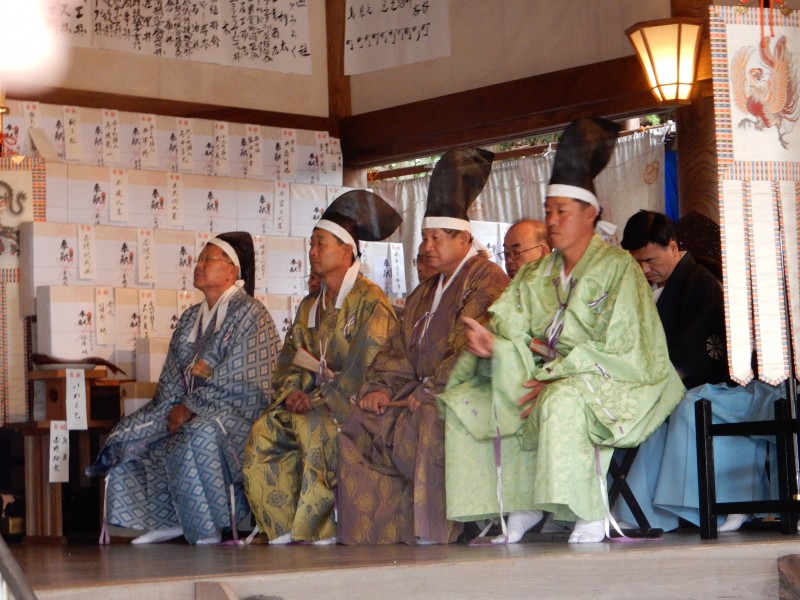
Priests attending the initial ceremony prior to the start of the festival. This is the serious religious part of the festival, after which things start to get a little wilder.
Autumn is here, and the festival season is in full swing. People associate this with harvests and nature worship, though many if not most of the festivals are nominally ancestral. That of Osake Jinja in Ako City (Hyogo Prefecture) is a case in point. Known as the Sakoshi Boat Festival, it started in Edo times to honour the memory of Hata no Kawakatsu , a Culture Hero and one of the leaders of the realm in the early seventh century. His supposed grave is just offshore from the shrine on the sacred Iki island, forbidden to visitors.
The festival is known as one of the Inland Sea’s three great boat festivals, along with Tenjin Matsuri in Osaka and that of Itsukushima at Hiroshima. It was everything you would wish a festival to be – dedicated to a clan leader of the past, it was marked by wild abandon, joyful high spirits and traditional style entertainment.
Followers of this blog will know of the vital role the Hata clan played in the establishment of Kyoto (as well as being the founders of the popular Fushimi Inari). This post follows up an earlier one on Hata no Kawakatsu (?567-647), who acted as advisor to the top of the realm, Prince Shotoku. The Hata probably had Chinese origins (the Chinese character for their name was the same as the ruling dynasty of China). They may well have linked up with the Yamato clan because of their shared immigrant status (personally I suspect a common Chinese heritage, but that’s my own pet theory; most authorities claim the Yamato as linked with Korea).
It seems that after the death of Prince Shotoku in 622, Kawakatsu fell into disfavour with members of the Soga clan and escaped to a place on the coast (currently Ako City). He died here and was supposedly buried on the offshore island of Iki, where by tradition a kofun (burial mound) marks his grave. The island is now regarded as sacred and no one but the priests and festival members are allowed onto it. A torii and shrine mark the worship area; the burial mound is at the other end of the small forested island.
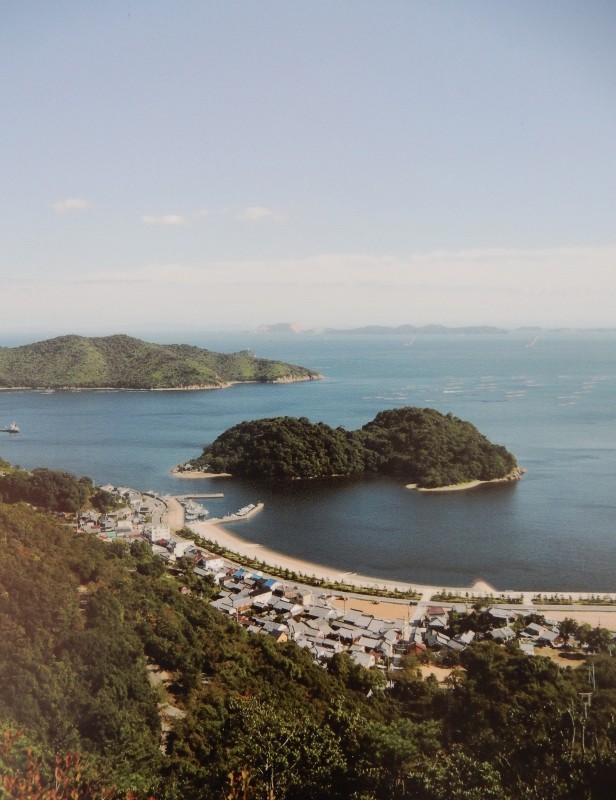
The sacred island of Iki on which lies the burial mound of Hata no Kawakatsu. Because Sakoshi Bay is shielded from typhoons, it was a major stopping point for boats in ancient times.
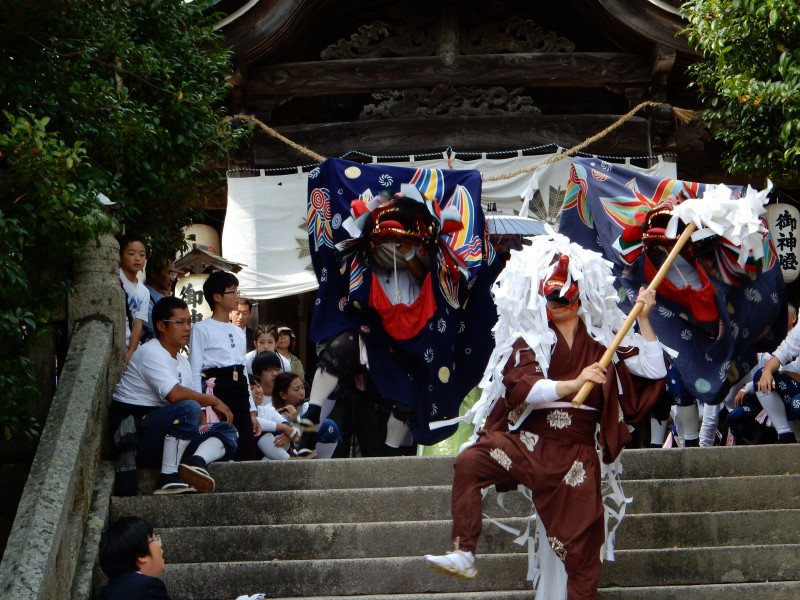
The festival began with one of the best purification rites I’ve ever seen, as Sarutahiko leads the way swinging a large haraigushi stick from side to side of the pathway, followed by two fearsome Chinese dragons. Symbolically a native Jomon figure of reddish features guiding the way for Chinese immigrants, perhaps…
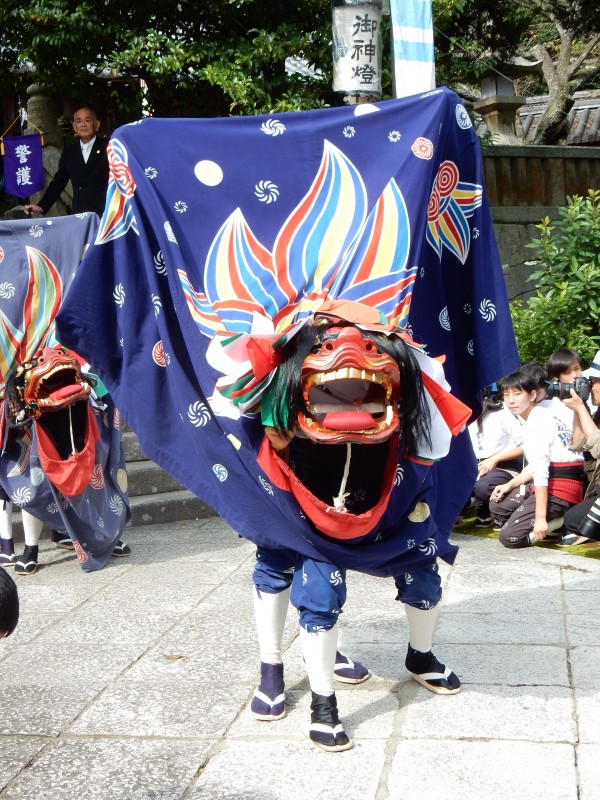
A four-legged shishi, not easy to navigate the flight of stairs. Traditional Chinese-style entertainment guaranteed to scare little kids and amuse the parents
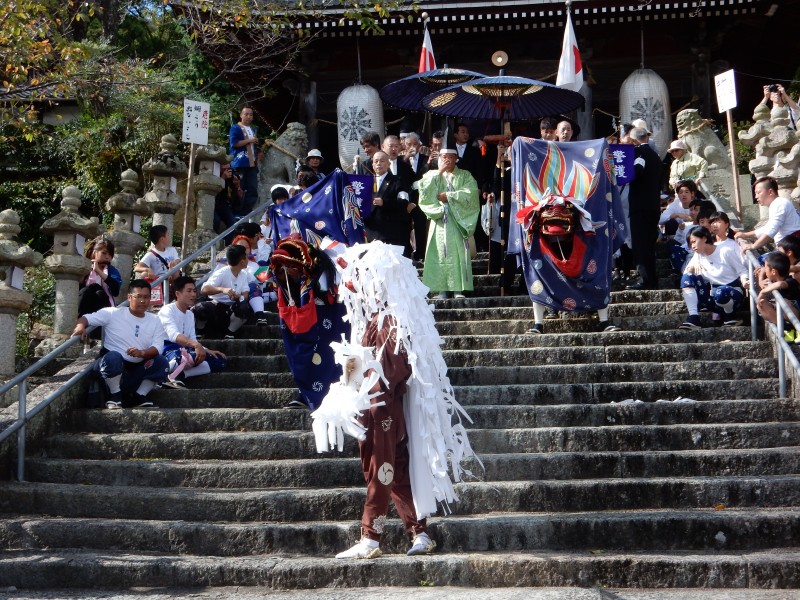
The initial purification rite which took over half an hour to progress down the stairs was very very slow (a reminder of the different sense of time in former ages compared with today). Surprisingly, the priest and dignitaries were all drinking alcohol as they took part in this slow opening procession.
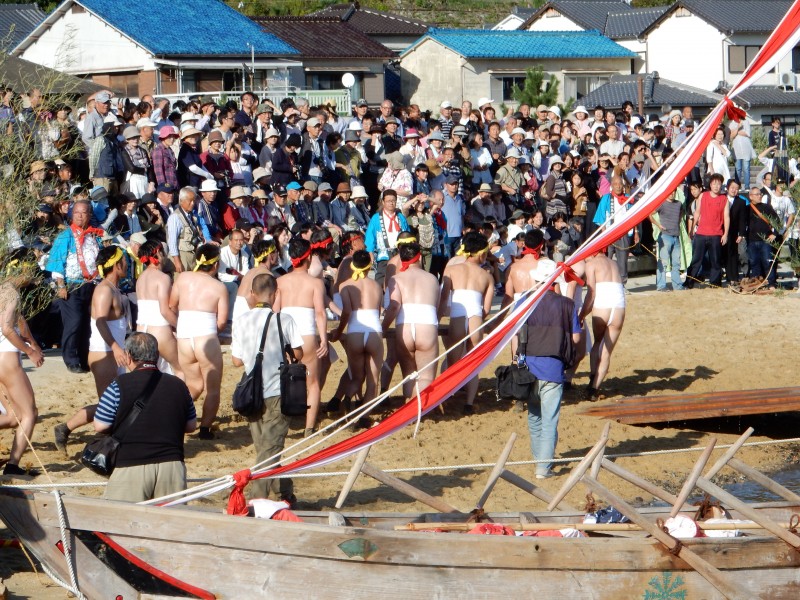
Once down the steps the procession suddenly raced at full and exhilarating speed towards the beach and the pre-launch festivities on the sand.
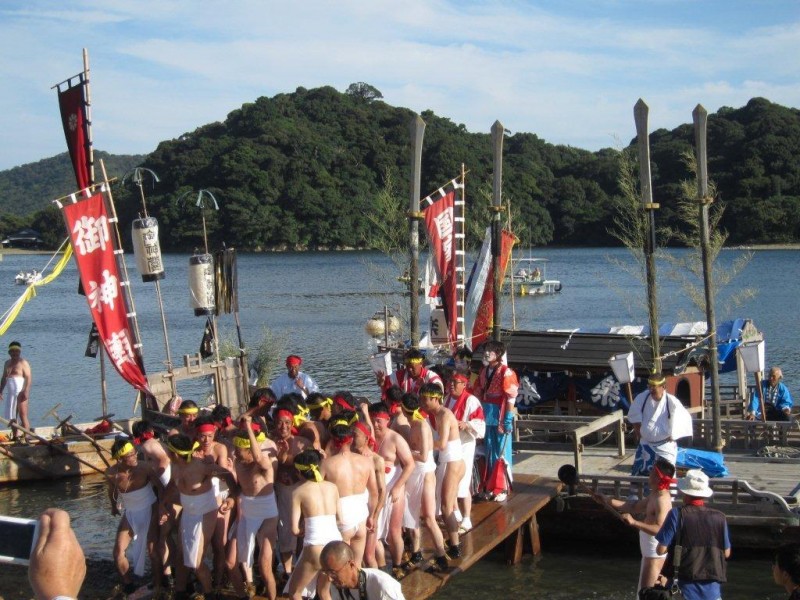
There was much jostling among the inebriated loin-clothed boatmen as they fetched long planks to set up a gangway for the mikoshi
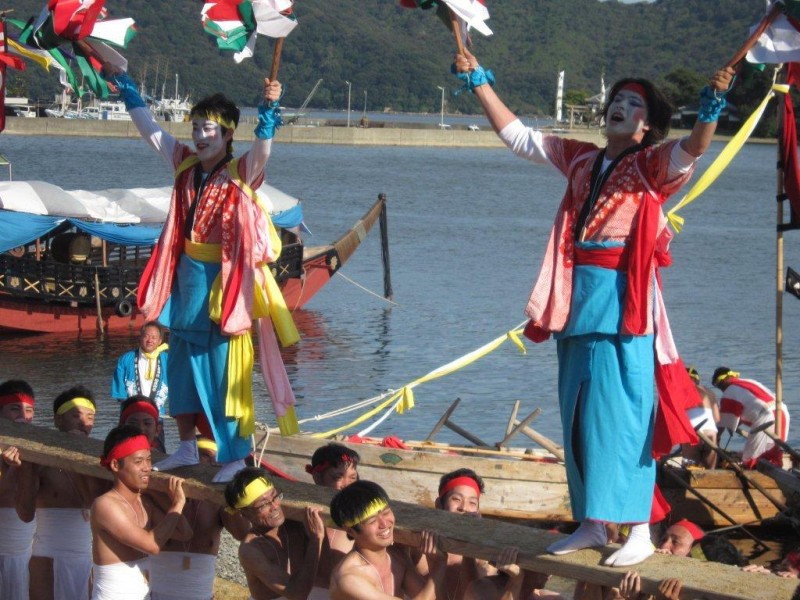
Edo-style cheerleaders added a colourful and flamboyant touch to the proceedings
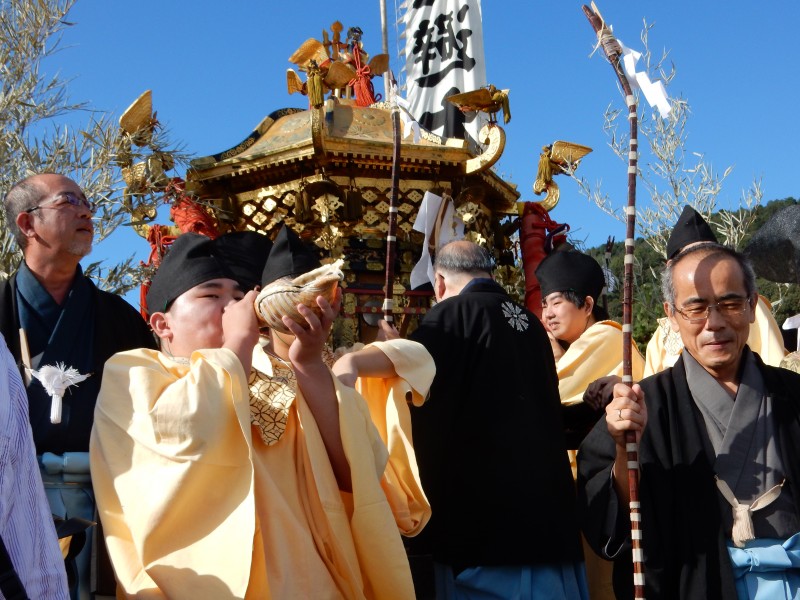
The mikoshi was accompanied by the sound of a conch shell being blown shugendo-style
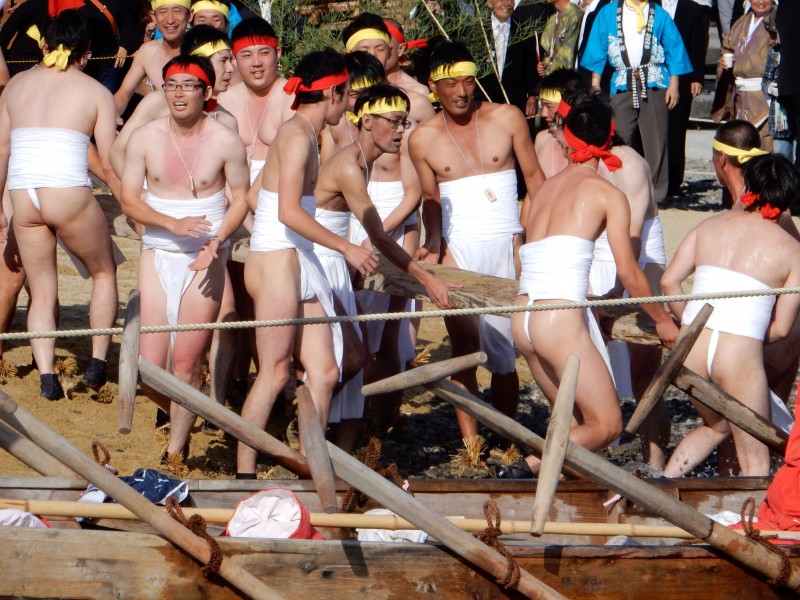
The festival had a Dionysian feel as chanting naked men jostled and teased each other while chanting and hoisting long wooden planks as they charged around the beach
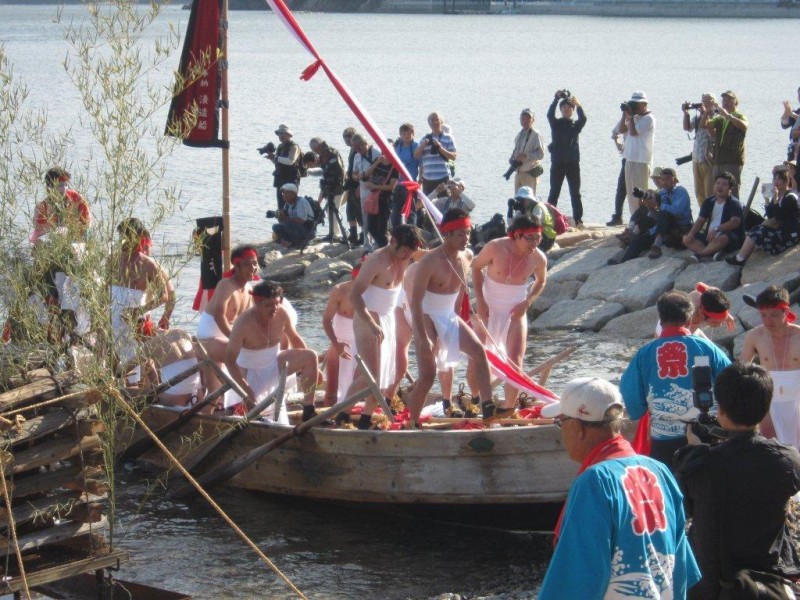
Once afloat the oarsmen playfully made ‘raids’ on the onlookers
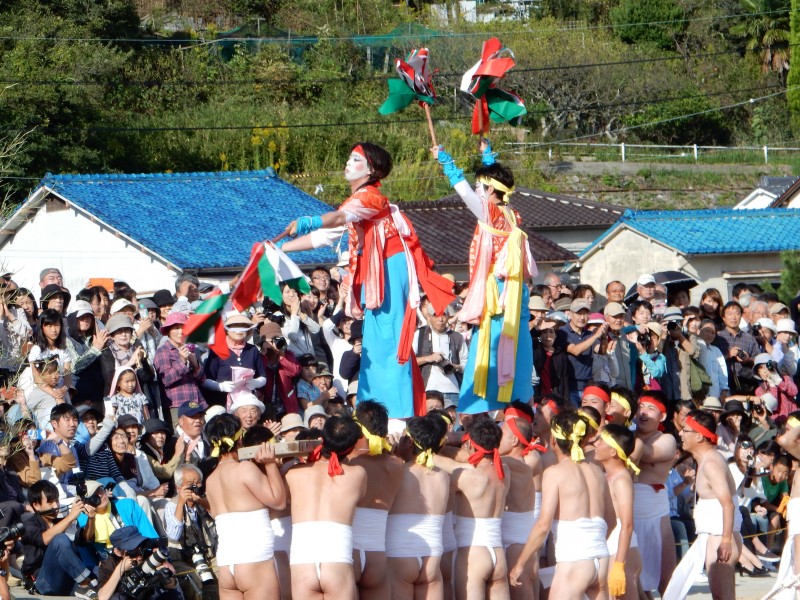
There were some acrobatics too as the cheerleaders were hoisted aloft
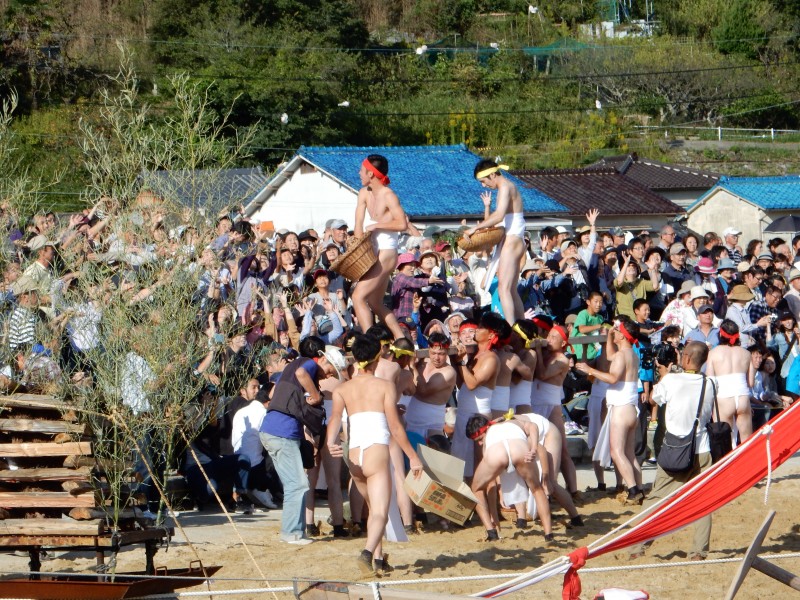
Sweets are thrown to the crowd, who compete to get hold of the lucky festival souvenirs
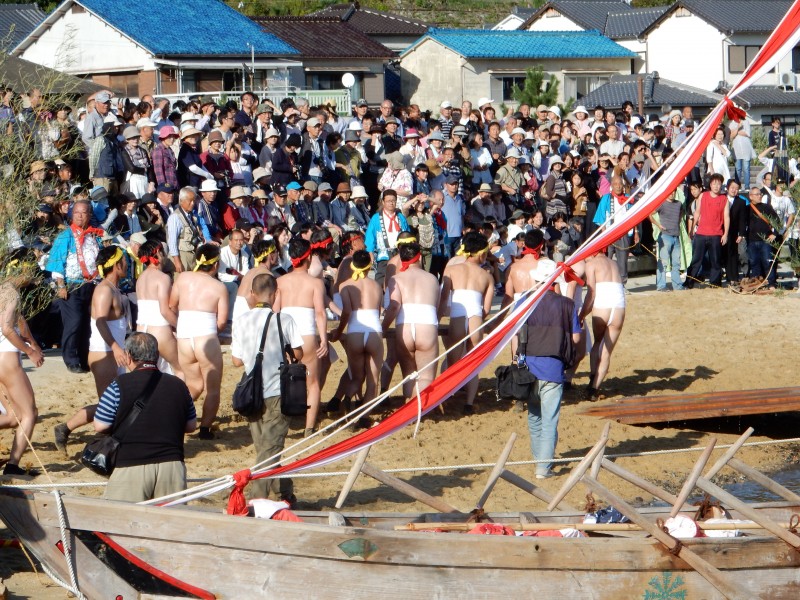
Another of the planks is taken up to the accompaniment of chants and banter by the intoxicated rowers
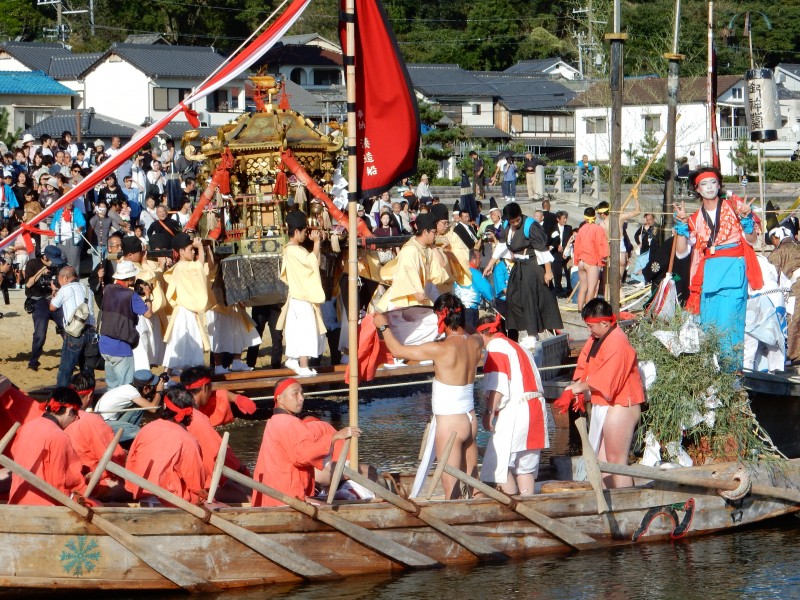
After all the celebrations the mikoshi is hoisted aloft and taken onto a boat. There were nine boats in all, two with rowers and the others motorpowered or towed. One was for gagaku, one for officials, etc. The announcer said that one was reserved ‘for those who don’t drink’.
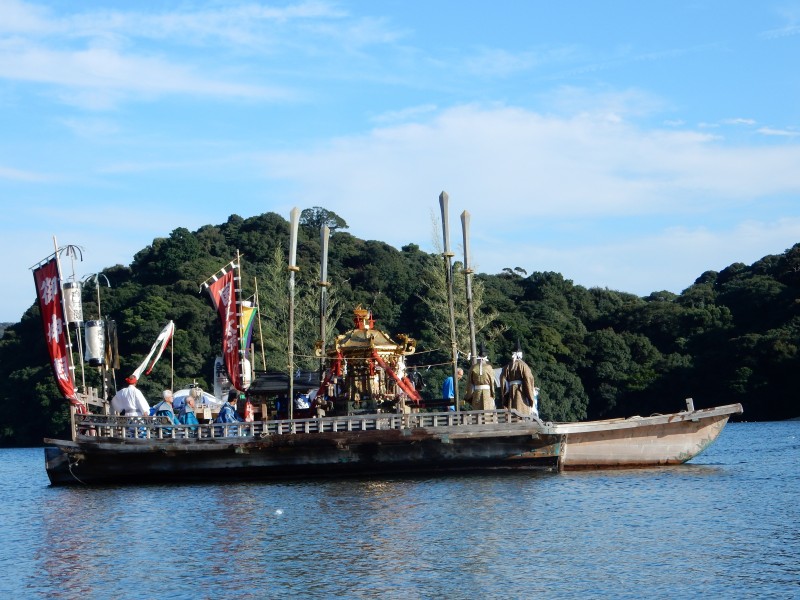
The mikoshi and other boats first sail around the small bay (making a round of the parish, as it were) before heading for the sacred island behind.
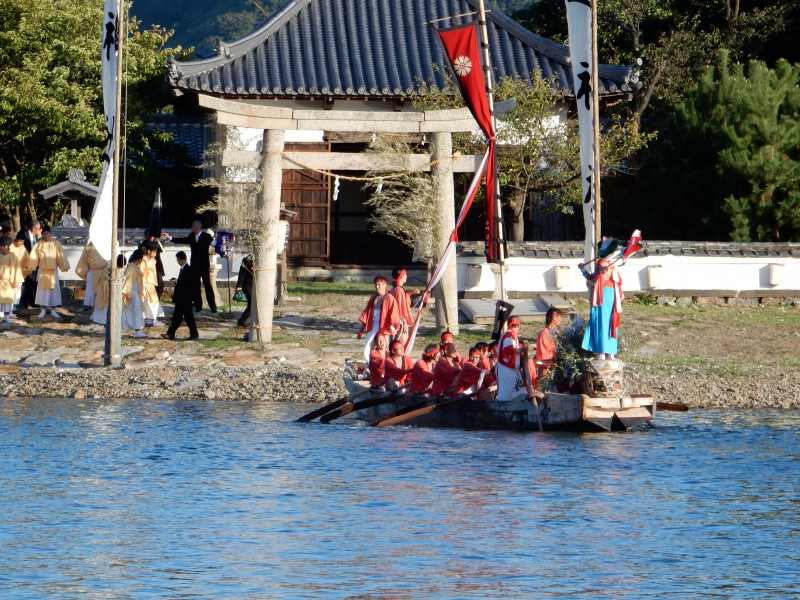
One of the boats at the sacred island, where a torii marks the arrival point for visitors.
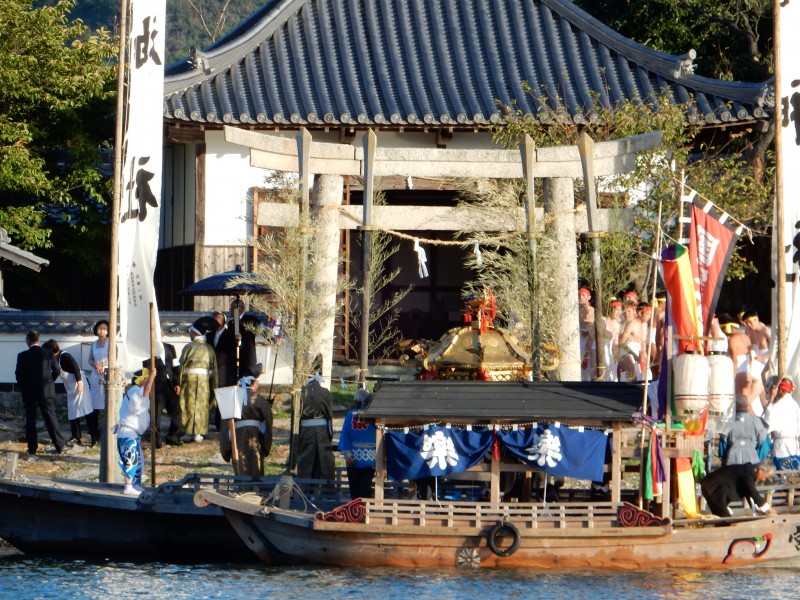
The mikoshi is born to its ‘otabisho’ (resting place) where a short service was held. Meanwhile, other participants headed back to shore.
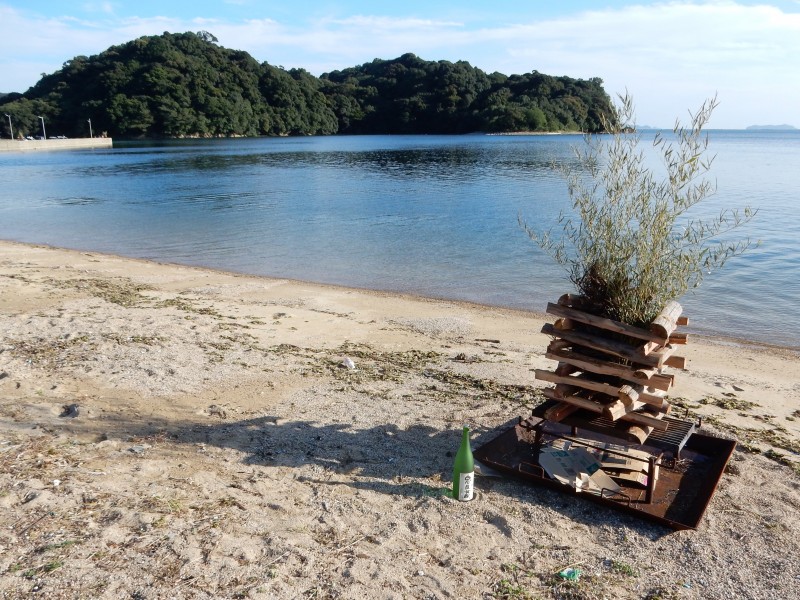
Piled wood waiting to be lit at dusk; notice the sake bottle waiting for those who light the fire. There was a long line of similar piles of firewood the length of the beach, to be set alight at dusk when participants gathered for bento and omiki (festival saké). It marks the end of a great day of entertainment for the kami, and you can be sure there will be plenty of sore limbs and even sorer heads the following morning.
*********************
For six minute video of the event on youtube, click here.
For previous entries about the Hata clan:
Part 1 Overview
Part 2 Kawakatsu
Part 3 Silkworm shrine
Part 4 Triangular torii
Part 5 Early Buddhism
Part 6 Matsuo Taisha
Part 7 Inari origins

Leave a Reply